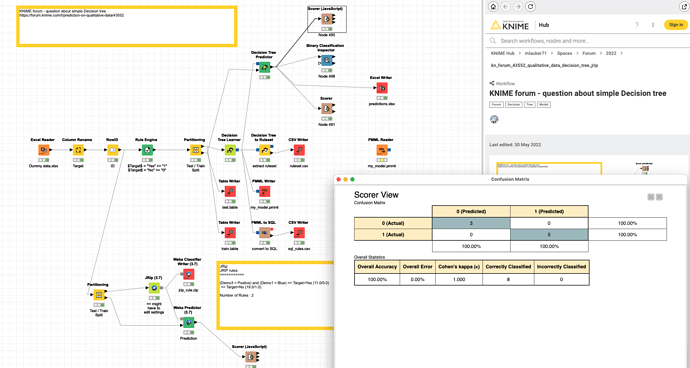@JWebb you might want to take a look at this example using your data. Trained on random 80% the model is able to predict what you want. Though you have to be careful in this case the dataset is very small and might also be special. If you want to re-use such a model you will have to make sure you have the same structure again. You might also want to educate yourself about a cutoff point that would make sense. The nodes might suggest one but depending on your use case this might differ.
Another approach might be to try rule inductions - to maybe detect smaller groups. I have included one example. It might very well be that this rule in the end is only able to correctly determine one of your cases and the others are the ‘rest’. It very much depends on your data and use cases.
